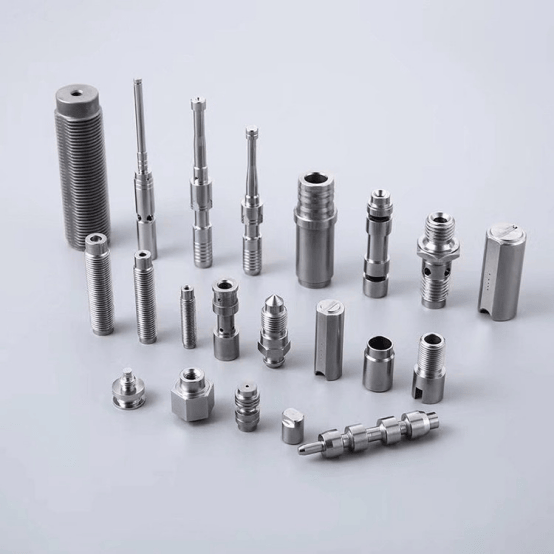Shaft pin components are typically machined parts that are used in conjunction with bearings. In the bearing industry, they are often referred to as needle rollers or rollers. Many people may assume that only bearing manufacturers would produce these components, but this is not the case. Precision component manufacturers like us can also manufacture shaft pin components, and we can do it very well. Today, we will introduce the design principles and related knowledge of shaft pin components.
Design Considerations for Shaft Pin Components
Shaft pin components are commonly subject to delayed fracture under stress. There have been instances where galvanized automotive parts such as springs, washers, screws, and leaf springs experienced fractures hours after assembly with shaft pins. The fracture rate for these parts was as high as 40% to 50%. Some cadmium-plated special products have also experienced mass cracking during use, leading to a nationwide effort to develop strict dehydrogenation processes. Additionally, hydrogen embrittlement does not always manifest as delayed fractures. For example, electroplated hooks (steel wire or copper wire) subjected to multiple electroplating and acid pickling processes may absorb significant hydrogen, and these parts often break brittlely after a few bends. Core rods used for precision forging of hunting rifles, after multiple chrome plating processes, also experienced brittle fractures upon hitting the ground. Similarly, certain quenched parts (which have high internal stress) can develop cracks during acid washing due to hydrogen absorption. These components absorb hydrogen to such an extent that cracks appear without any external stress, and cannot regain their original toughness even after the dehydrogenation process.
Shaft Pin Anti-Shear Design Principles
When designing shaft pins for shear resistance, the friction-type connection between the shaft pin and the mating parts is designed such that the maximum possible friction force from the bolt tightening force, which is induced by the external shear force, acts as the limiting condition. This ensures that during the entire usage period, the external shear force does not exceed the maximum friction force. In this case, the connected plates will not undergo relative sliding deformation (the gap between the bolt and the hole wall remains constant), and the connected plates are subjected to elastic forces as a whole.
In high-strength shaft pin pressure-type connections, external shear forces are allowed to exceed the maximum friction force. When this happens, relative sliding deformation occurs between the connected plates, until the bolt rod comes into contact with the hole wall. After this point, the connection relies on the shear force in the bolt rod, the pressure on the hole wall, and the friction between the contacting surfaces of the plates to transfer the load. The ultimate shear failure of the connection is determined by either the shear failure of the bolt rod or the pressure failure of the hole wall.
In summary, the design of shaft pin components must account for the potential issues of delayed fracture due to hydrogen embrittlement, and it is essential to consider the material and stress factors when designing for shear resistance and load transfer. Proper understanding and application of these principles can help ensure the reliability and durability of shaft pin components in various applications.

 Hot News
Hot News2024-11-29
2024-11-29
2024-11-29
2024-11-29